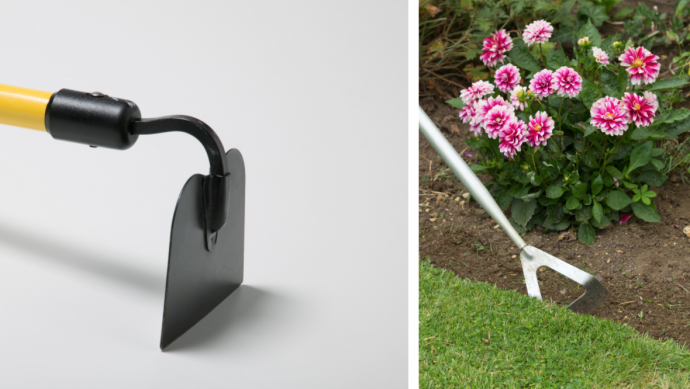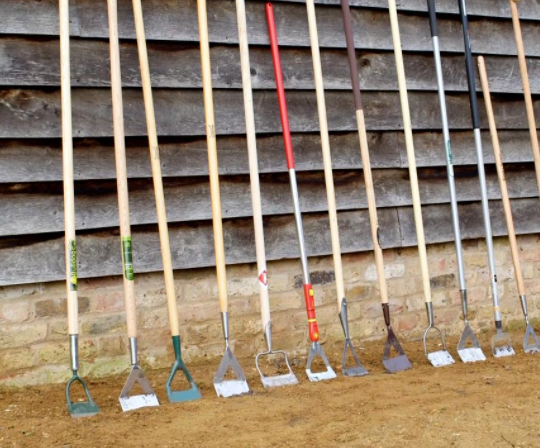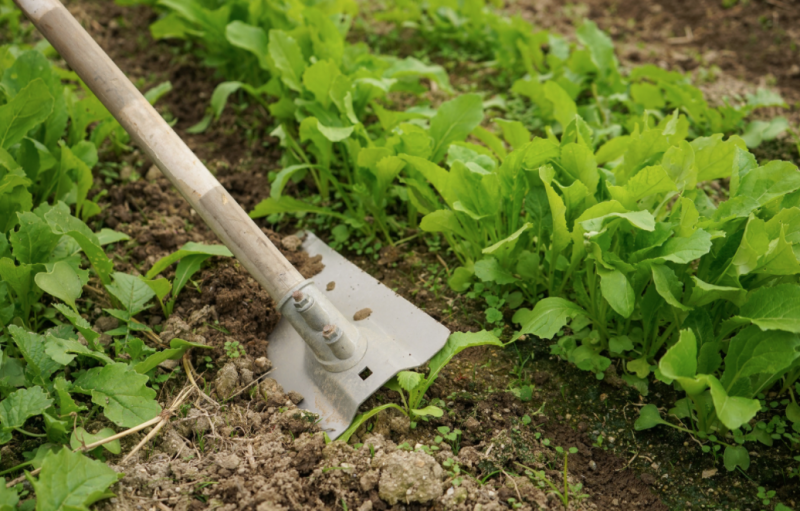How to Choose the Right Garden Hoe

The right choice of tool in the garden can make a big difference. A hoe is used to dislodge weeds or for cultivating the garden, stirring up and mounding the soil. It’s an important tool for any serious gardener, but did you know that there are multiple types of garden hoes? Some are better for specific jobs, like weeding, while others are designed for bigger or smaller spaces. Choose the right hoe for the job and both the garden and your muscles will thank you. Check out our roundup of that essential garden tool, the garden hoe. Learn how to choose the right one for your situation.
Every gardener needs a hoe and now’s the time to put it to good use, as weed seeds will have begun to germinate. So hone your hoeing technique and you’ll find that clearing annual weeds is a quick and easy task. A hoe is the ideal tool for weeding between rows of veg and hardy annuals. Aim to sever the top growth from the roots, just below the soil surface, then leave it in the sun to wither and die. Hoeing is best done when the soil is dry as this creates a ‘dust mulch’ that also inhibits the germination of new weeds. Hoe little and often, and sharpen the blade regularly. A long-handled hoe is easy on your back, as you don’t have to bend and can cover a large area fast. A short-handled ‘onion hoe’ is better for closely planted areas, where you don’t want to damage nearby plants. Hoeing won’t kill deep-rooted or perennial weeds – these need to be dug up by hand.

Here are the main types of garden hoes:
1. Paddle or Draw Hoe
Perhaps the most commonly used garden hoe, it features a rectangular paddle at the end of the handle that is angled at 90 degrees. It is a good general hoe that will dislodge weeds by the root and can mound and shape soil. The paddle hoe is used by pulling it back or making a chopping motion. There are also small versions featuring smaller paddles for tight spaces.
This is a good general hoe that can help you dislodge weeds by the root or mound and shape soil. You can find versions of this with smaller paddles for tight spaces and in lighter weights. If you aren’t sure how to use a hoe that is more specialized, this is a good place to start.
2. Stirrup Hoe
Also known as a shuffle or loop hoe, this tool has an attachment that resembles a stirrup on a saddle. The stirrup hoe is used with a back-and-forth motion that helps to dig out stubborn weeds without displacing soil. While the paddle hoe is usually used by pulling it back or making a chopping motion, you can use the stirrup with a back-and-forth motion that really helps to dig out stubborn weeds without displacing a lot of soil.
3. Collinear or Onion Hoe
This hoe features a long and thin paddle. It's designed to weed in narrow spaces. The blade rides parallel to the surface of the soil. It's used in the same manner as the paddle hoe—in a chopping and pulling motion. This hoe is designed to weed in narrow spaces and the blade rides parallel to the surface of the soil. Because of the angle of the blade, you can use it without bending over, which is great for the back.
4. Warren or Dutch Hoe
This hoe features a flat triangle or spade blade attached at a 90-degree angle. The pointy end of the blade faces out and is used to get into tight spaces or to dig out difficult weeds.
The pointy part faces out and is used to get into tight spaces or to dig out difficult weeds.

Four ways to use a hoe
1. Sweep a Dutch hoe with flowing movements over soil to brush the surface and slice the tops from weeds. Very little effort is required if the hoe is used properly.
2. Slice the tops of weeds with a draw hoe by bringing the hoe towards you. You can change the angle to accommodate slopes where plants have been earthed up.
3. Turn over a Dutch hoe, and you can use it to make a seed drill (shallow trench) to sow seeds into. This method works best for seeds that need to be covered well.
4. Cover seed sown in a drill with a draw how to prevent bending down. This works well for large seeds, such as peas, that need plenty of soil over them.
